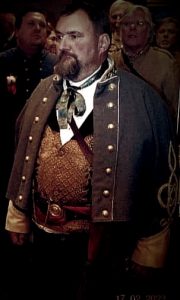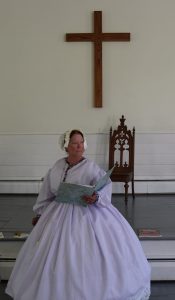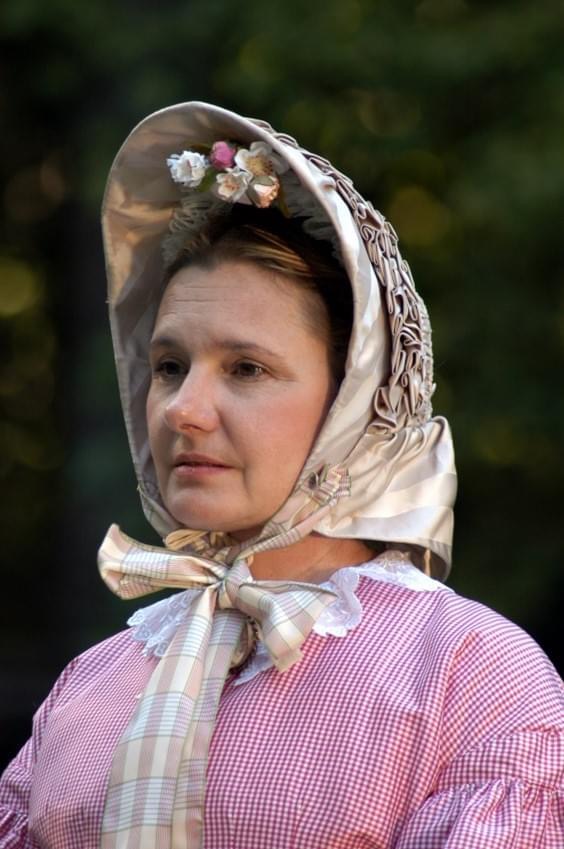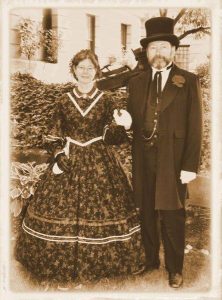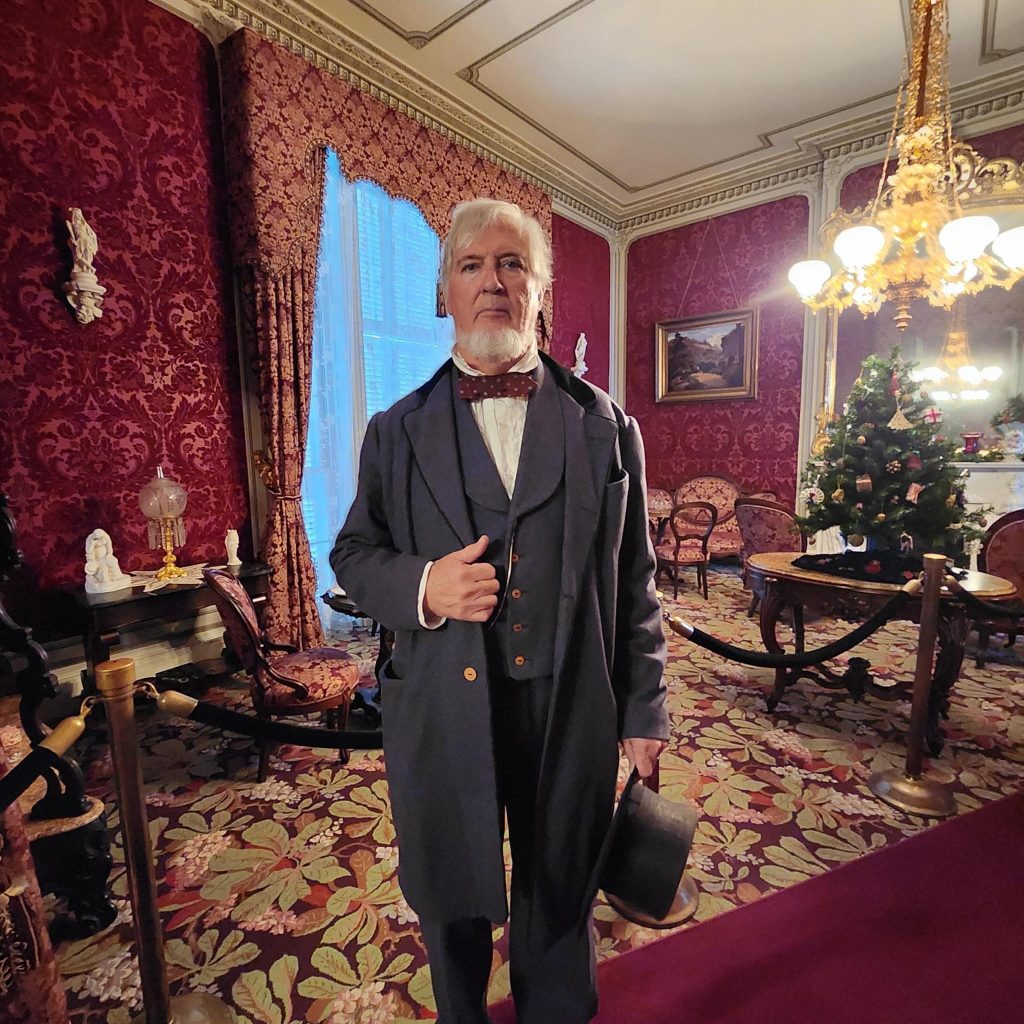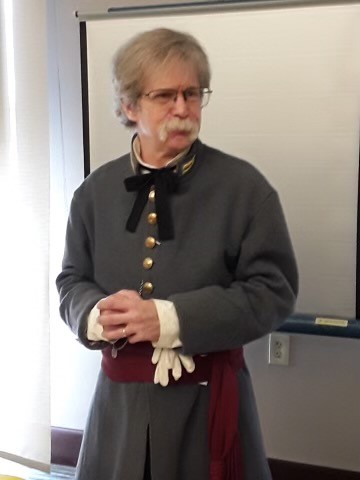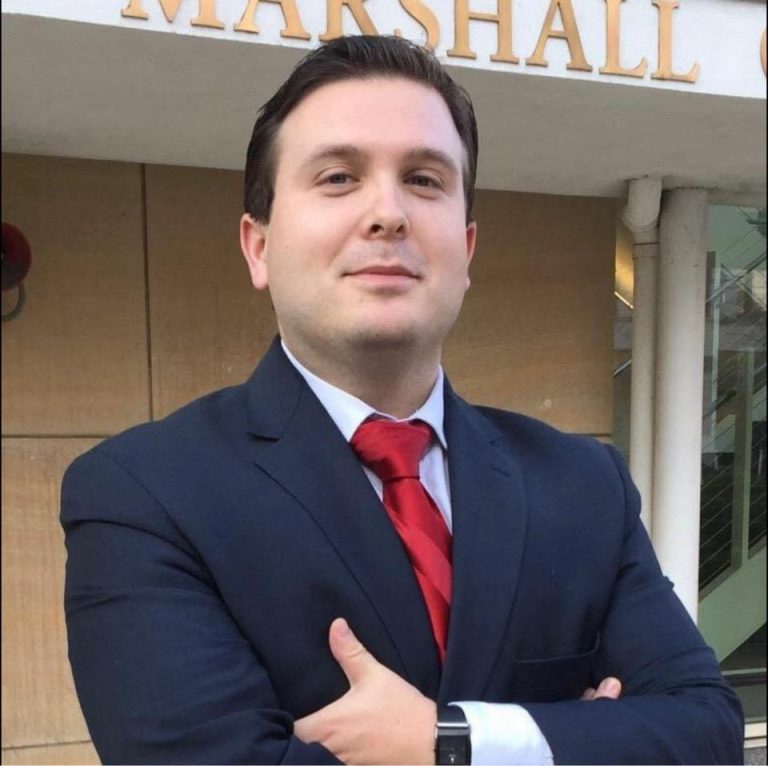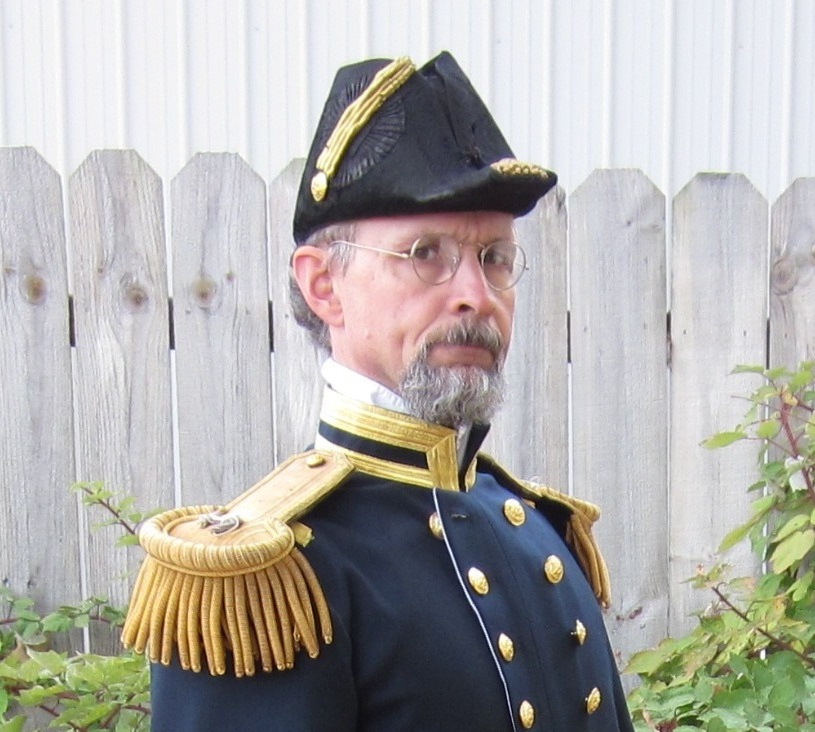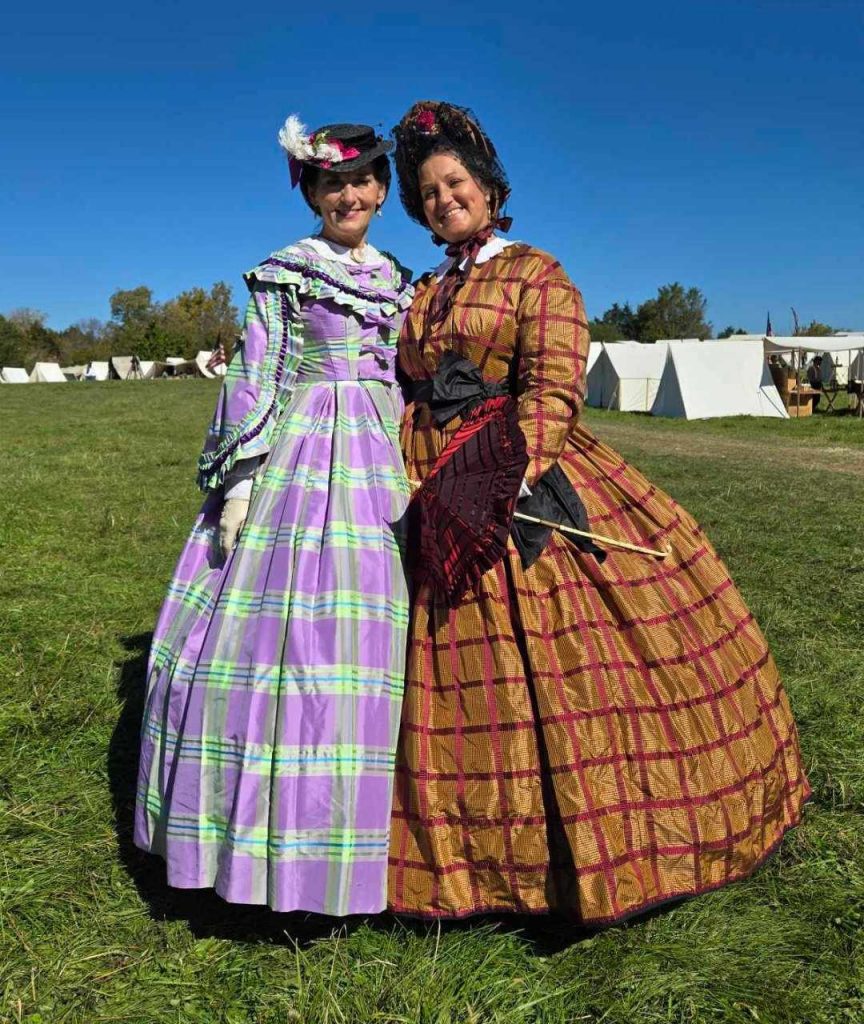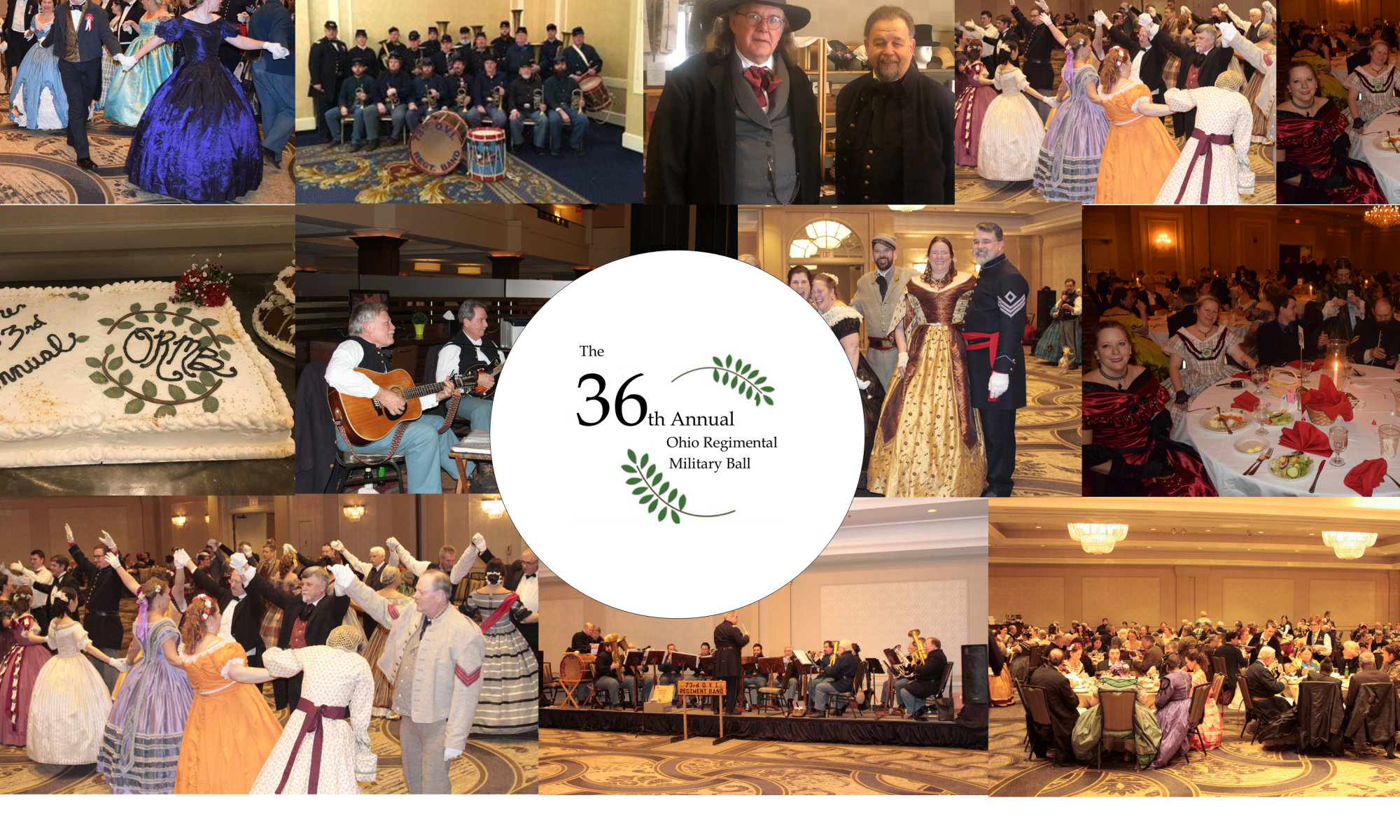2025 ORMB PRESENTERS
PRESENTATIONS
1) “Fought Literally Up to the Muzzles—The Battle of Appomattox
Station”—presented by Gary Whitla. In addition to the observance of the
160 th anniversary of the end of the Civil War, Gary will be speaking about the
work of the Appomattox-Petersburg Preservation Society.
2) “Ladies’ Millinery During the Civil War: A Review of Styles and Their
Context of Usage”—Vickie St. John and Sandy Hadley will have a wide variety
of period correct headwear to show you that will serve to help hone your
impression or to satisfy your inquiring mind.
3) “The Burden of Leadership—Tough Questions for Jefferson Davis and
Alexander Stephens” as interpreted by David Walker and John Rhys.
4) “Future Presidents that Served in the Civil War….Their Leadership and
Contributions & Quotes”—presented by Andrew MizsaK
5) Jackie Jacobs—topic TBA shortly
6) “Detailing the Life of a Civil War Naval Officer”—with Robert Dispenza.
7) “Bible and Bird—Scripture and Acapella Vocals”—with Rev. Dr. Thomas
“Skip” Wilson and Diane Virostko
8) “The ‘First Couple’ of ‘Restored Virginia’—Gov. Francis Harrison Pierpont
and Lady Julia Pierpont”, as interpreted by Art Dodds and Dr. Pamela Dodds
9) Alternate topic in case of last minute cancellation: “Veterinary Medicine
and Animal Husbandry in the Mid 19th Century” with Dr. Holly Ray
CONFERENCE ROOM 1
CONFERENCE ROOM 2
10-10:45 Bible & Bird Skip Wilson & Diane Virostko
11-11:45 Future President that Served in the CW Andrew Mizsak
Noon – 1:00 FASHION SHOW IN COMMON AREA SHOPPING & Lunch
1-1:45 Ladies Millinery Vickie St. John & Sandy Hadley
2-2:45 Jackie Jacobs
3-3:45 Dr. Holly Ray
Gov Pierpont of Restored Virginia Art Dodds & Dr. Pamela Dodds
Battle of Appomattox Gary Whitla
Noon-1:00 FASHION SHOW IN COMMON AREA, SHOPPING & LUNCH
Burden of Leadership–Davis & Stephens – David Walker & John Rys
Life of a Civil War Naval Officer Robert Dispenza
Presenter Biographies
Rev. Dr. Thomas Skip Wilson
Colonel Commanding Officer 4th Battalion Provisional Army of the Confederate States 30 years as a reenactor
Chaplain to the reenacting community.
Instructor and author of curriculum at Springs of Life Bible College
Teacher at Wilderness Cries FB page
Mrs. Diane Virostko
“The Civil War Songbird,” of Cleveland, Ohio is an Acapella singer and for more than
thirty years has been a member of a community chorus, “The Westshore Chorale”. She also frequently
performs as a Cantor, and has filled the role at multiple parishes in both Ohio and Michigan. She is the descendant of Andersonville prison camp survivor, Sgt. George Oscar Scott, of the 8th Michigan Cavalry,
Co. A, whose unique Civil War experience inspired her to share the human side of history with others.
Since 2013, she has performed for audiences of all ages and shared her ever growing knowledge about
the Civil War and its music. She has been a featured guest at Hale Farm & Village, Historic Zoar Village
and Mansfield Civil War Ladies Tea. She often joins the 1st Ohio Artillery, Battery A reenacting group
during their regular season, and can usually be found either entertaining the troops or cooking over the
campfire. When not singing, she enjoys side-saddle horseback riding, sewing, and cats.
Jackie Jacobs
Jackie Jacobs has been involved in reenacting and historical clothing reproduction
since 1984. In 1986 she started Past Reflections, a company dedicated to the
creation of historically accurate clothing, patterns and accessories for the modern
reenactor. Jackie has provided costuming for movies, theater and ballet
companies, and for personnel working for our National Parks systems and other
museum venues. Her clientele is domestic and international.
Jackie also has exhibited and lectured about her collection of original garments at
museums like Colonial Williamsburg and The Henry Ford, as well as small local
museums. She has presented workshops on historical clothing and accessory
construction for Corsets & Cravats (virtual and in-person) conferences and The
Civilian Celebration conferences. There are also many collaborative episodes with
Civil War Digital Digest on various subjects in regards to clothing, accessories and
civilian life. These video productions help to bring her extensive collection of
original clothing to a wider audience.
Art & Pam Dodds
Art and Pam Dodds live in Barbour County, West Virginia. Art retired from the National Oceanic and
Atmospheric Administration where he managed the production of Instrument Approach Procedures
Charts for airports in the United States. Pam is a Registered Professional geologist, specializing in
hydrogeology, and a musician. Art and Pam have a keen interest in history and have been portraying
Governor and Julia Pierpont at reenactments and various events for the past seven years. They have
participated in the reenactments at the Blue Gray Reunion in Philippi, the Battle of Laurel Hill in Belington, events at Gettysburg, Fairmont, and the Beverly Heritage Center, and Civil War
Sesquicentennial Commemoration events in Clarksburg, Charleston, and Wheeling. They are
members of the West Virginia Reenactors Association and the Valley Division, and believe that
reenacting keeps history alive and helps to stimulate interest in historical events.
David Walker
David Walker has been a reenactor and living historian for the better portion of his life,
and has been impersonating Jefferson Davis for 20 years. Prior to his portrayal of the
controversial Confederate President, he spent many years in the ranks of the Union
infantry. David presents Jefferson Davis from birth in Kentucky until his release from
prison at Ft. Monroe, Virginia in 1867.
David served in the Army National Guard for 7 years before becoming a teacher. He
received his M.A. in history from Wright State University and spent thirty years as an
elementary teacher, teaching mainly 5 th grade. He has attended the Lincoln Forum for
26 years and Civil War Institute—both in Gettysburg– for 15 years. He is busier than
ever in his retirement, appearing at Civil War reenactments, roundtables, balls,
conferences, fashion shows, schools, and civic functions. Last year, David had the
opportunity to work in film.
David has performed in over ten states and last summer he had the honor of portraying
Davis at a SC event.
John Rys
John Rys has been involved in the living history hobby for almost 20 years and is a member of the 5 th
Texas Co A, and North Coast Narrative. You may have had the pleasure of hearing him speak about
ballroom etiquette and political figures; he finds Alexander Stephens particularly interesting. He is also
the adjutant for the Jeff Davis Rifles Battalion.
John shares a home with Lori, his wife of 38years, and their dog Marlow. Other hobbies include
restoring and driving classic Mopar muscle cars, collecting US medals, and creating his garments for
reenacting.
George Whitla
Gary M. Whitla, Esq. is the Vice-President and Co-Director of the Appomattox-Petersburg Preservation
Society, Inc., a Virginia-based 501(c)(3). Formed in 2022, the Appomattox-Petersburg Preservation
Society (“APPS”) is the only preservation society focusing solely on preserving battlefields and landmarks
from the Petersburg and Appomattox Campaigns. Gary’s passion for history is matched only by his
passion for law. Gary is a licensed attorney practicing domestic relations and family law, and is a
graduate of Cleveland-Marshall College of Law in Cleveland, Ohio. He is also an experienced political
activist and campaign manager.
Bob Dispensa
Bob Dispenza is one of our most popular speakers and we are lucky to have him back for what is sure to be a dynamic presentation. We had the pleasure of learning about enlisted men in the Navy previously—now he will teach us about Navy officers. Bob has worked professionally for numerous county, state, and national parks and has received many related awards. Interests include Civil War Navy reenacting, pocket watch collecting and repair, backpacking, camping, hiking, astronomy, music (trombone and autoharp), volleyball.
B.S. Natural Resources, The Ohio State University, 1981 B. A., California State University, 2008– Present – 2006 Park and Education Manager, Allen County Parks Director of Education, Allen County Parks, Fort Wayne, IN – Present Owner and Operator, Nature Chronicles – 2000 – Naturalist, Metro Parks, Serving Summit County, Akron OH — 1990 Teaching Naturalist, Wesselman Woods Nature Preserve, Evansville, IN – 1983 Education Staff, Barrier Island Environmental Education Center, John’s Island, SC
– 1983 Park Technician, Theodore Roosevelt National Park, Medora, ND
– 1982 Education Staff, National Audubon Society’s Corkscrew Swamp Sanctuary, Naples, FL
Chair of Mobile Workshops Committee, Region 4 Interpreters Workshop, 2007
Chair of Visual Communication Section, NAI (National Association for Interpretation)
2004-2007
Chair of the NAI region 4 Scholarship and Grants Committee, 1994-1999
NAI Region 4 Newsletter Committee, 2001-2004
NAI National Master Front-Line Interpreter, 2007
NAI Region 4 Distinguished Professional Interpreter, 2007
NAI Region 4 Distinguished Service Award, 1997
NAI Certified Interpretive Guide, Certified Interpretive Trainer
Third Place, NAI National Media Competition, Exhibit Guides, 1987
NAI Region 4 Outstanding Interpretive Program Award, 1988
Vickie St, John
Vickie St John has lived every style of life in the 1860s. She has been reenacting since she was 4 years old & grew up as a member of the Mudsills. Currently, living in Michigan, she is a member of the board for the Jackson Civil War Muster, a member of the Amaranth Society & the 21st Michigan civilian coordinator
Sandy Hadley
I have been a living historian for over 25 years. I consider it a great honor to be a part of such a large community of like-minded people who love history as much as I do. I am a member of the Amaranth Society, The Molly Pitchers and S.C.A.R. I have done presentations of Varina Davis ( wife of Jefferson Davis) Fanny Gordon( wife of Gen John B Gordon) And was an Assistant Costumer on a CW period film in 2024 called the Legend of Van Dorn. I am beyond thrilled to be a presenter this year to impart any knowledge that would help someone in their impression.
Andrew Mizsak
The Honorable Andrew C.M. Mizsak, M.A.P., MBM
Secretary and Director, Civil War Round Table Congress;
Vice Commander and Administrative Officer,
James A. Garfield Civil War Round Table;
Secretary-Designate, Geauga County America250 Committee
Active in the Civil War community since 2013, Secretary Andrew Mizsak
currently serves as Secretary and Director of the Civil War Round Table
Congress, a national organization serving over 250 Civil War Round Table and
allied organizations. In addition to this service, Secretary Mizsak serves as
Vice Commander and Administrative Officer of the James A. Garfield Civil War
Round Table, the Regional Civil War Round Table for Southern and Eastern
Cuyahoga, Northern Summit, and Geauga Counties of Ohio. Secretary Mizsak
has held this role since 2021, ascending from Adjutant (2019-21) and
Secretary (2015-2019). Secretary Mizsak is a Charter Member of the James A.
Garfield Civil War Round Table.
A subject matter expert (SME) on Ohio Government and Politics, Secretary
Mizsak has lectured to numerous organizations on topics related to Ohio
Government and Politics, including the Presidents of the United States from
Ohio, the Ohio General Assembly, and general Ohio political history. Secretary
Mizsak is also considered to be an SME on vexillology (the study of flags).
Professionally, Secretary Mizsak is the principal consultant and CEO of Main
Street Consultants, a public affairs consultancy group, as well as the Cultural
Sites Advocacy Group, a consultancy group focusing on historical preservation.
In 2022, Secretary Mizsak led the efforts for the National Memorial Designation
of the Kol Israel Foundation Holocaust National Memorial through the United
States Congress (Public Law 117-328), which established the 58th National
Memorial of the United States. Currently, Secretary Mizsak is working with the
Citizens Advocating Memorial Preservation in Cattaraugus County, New York,
to preserve the Cattaraugus County Memorial and Historical Building and have
it listed on the National Register of Historic Places. For this work, Secretary
Mizsak was named as one of the “18 Difference Makers” for 2022 by the
Cleveland Jewish News.
Additionally, since 2022, Secretary Mizsak has been working with the Save
Wyse Fork Battlefield Commission in Jones and Lenoir Counties of North
Carolina to preserve the core of the Wyse Fork Battlefield from being turned
into a highway interchange. This work has been featured on local media in the
Greenville, Charlotte, and Raleigh media markets in North Carolina.
Since 2014, Secretary Mizsak has served as a leader of the Ohio Delegation at
the annual American Alliance of Museum Advocacy Days in Washington, DC.
Secretary Mizsak also serves as the Manager of External Affairs, Development,
and Government Relations for the Geauga County Historical Society in Burton,
Ohio. In addition to this portfolio of being the chief grant-writer, fundraiser,
and advocate, Secretary Mizsak is the coordinator of the Civil War Weekend
event, serves as a Member of the Geauga County America250 Committee, and
is designated for membership in the Geauga County Township Association.
Secretary Mizsak has presented on topics related to the Civil War and/or Ohio
Government and Politics at the Ohio Statehouse, the Ohio Regimental Military
Ball, and to the Bedford Historical Society, Wadsworth Historical Society, Stark
County Civil War Round Table, Cuyahoga Valley Civil War Round Table,
Tuscarawas Valley Civil War Round Table, and Quincy Gillmore Civil War
Round Table. Secretary Mizsak has also served as Co-Chair of the annual
Garfield Symposium since 2014, as well as a presenter at the event each year.
In 2023, Secretary Mizsak served as a panelist at the national conference of the
Civil War Round Table Congress in Gettysburg, Pennsylvania.
Secretary Mizsak serves as an Adjunct Professor of Political Science at
Lakeland Community College in Kirtland, Ohio, where he teaches an
undergraduate course in American Government. He also occasionally guest
lectures at Lake Erie College in Painesville, Ohio. Secretary Mizsak is currently
in the process of writing his first book, an American Government textbook that
is scheduled to be published in August, 2025.
A former award-winning appointed and elected official, Secretary Mizsak held
his first office in 1996-97 as a Member of the Bedford Township Bicentennial
Commission. He also served as Member and Chairman of the City of Bedford
Board of Zoning Appeals (2002-2005); as Member and Treasurer pro tempore of
the Bedford City School District Board of Education (2006-2009); and as the
Secretary of a major political party in 2022. As a Member of the Bedford Board
of Education, Secretary Mizsak received a Distinguished Service Award from
the National School Boards Association in 2009, as well as three Awards of
Achievement from the Ohio School Boards Association (2008, 2009, 2010). In
2010, Secretary Mizsak received the professional designation of Master Board
Member (MBM) from the Ohio School Boards Association.
Secretary Mizsak received his Bachelor of Arts Degree in Political Science
(specializations in American Government, State and Local Government, Public
Administration, and Public Law) from Bowling Green State University in 2002.
He also holds a Master of Applied Politics (M.A.P.) degree from the Ray C. Bliss
Institute of Applied Politics at the University of Akron, where he was a full
scholarship student and served as a graduate student teaching and research
assistant. Secretary Mizsak also has additional coursework in American
History and Government from Ashland University and the University of Akron.
Since 2003, Secretary Mizsak has also held the rank of Colonel on the staff of
the Governor of Kentucky.
Secretary Mizsak is married to the former Dana Best, an educator and awardwinning historian, and is the proud dog dad to Mozzarella, a rescue.
Rev. 01222025
Dr. Holly Ray
Profiles of our 2025 ORMB Presenters
